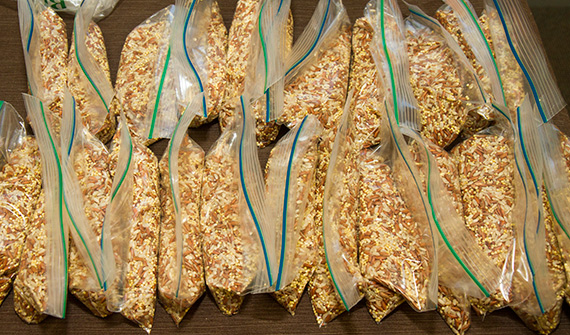Getting around gluten
Ed Portal workshop covers celiac, diet options
The Harvard Allston Education Portal on Thursday hosted a workshop examining the effects of gluten on health, with Jennifer Zartarian of Cambridge Health Associates answering questions and acting as a guide through the latest research.
Zartarian started the workshop by asking if anyone in the group had celiac disease, a serious condition connected to gluten, a substance found in cereal grains, particularly wheat.
Bibiane Baptiste, who works in Harvard Alumni Affairs and Development, was diagnosed with the disease in 1995. Baptiste said her digestive system was “always bad” for as long as she could remember. Dull pain in her stomach escalated when she ate fried or spicy foods. Her reactions were so severe her color changed, and she couldn’t walk. She also had problems with fibromyalgia. “I felt like I was dying,” she said, until finally she was diagnosed and adjusted her diet.
“It’s easier now,” Baptiste said, because there are so many gluten-free options on the market. But, she said, living gluten-free can still be a challenge and “very expensive.”
Baptiste’s story is a typical one, said Zartarian. Many people also experience fatigue, depression, and numbness, among other conditions, as a result of celiac or gluten sensitivity. In addition, research suggests celiac sufferers are at greater risk of developing lymphoma, she said.
Gluten shows up in everything from bouillon cubes to “natural flavors,” besides being in many pastas and breads. According to Zartarian, “One percent of the population has celiac, and 6 percent has gluten sensitivity,” or some type of reaction to gluten.
More awareness is helping, she said. The Food and Drug Administration recently ruled that to be labeled “gluten-free,” a food must contain less than 20 parts of gluten per million, because “any more than that risks irritating the gut lining.”
Gluten-free grains include brown rice, quinoa, amaranth, wild rice (which is actually a grass), corn, and gluten-free oats. These can usually be found in the bulk section of health food stores, and make a nice addition to meals. Slow cooking or soaking grains overnight makes them easier to digest, Zartarian said.

She also suggested adding nuts, or toasting grains in the pot prior to adding water to bring out their natural, nutty flavors. Turning to baking, she recommended combining rice flours with other gluten-free flours, such as garbanzo.
Finally, Zartarian encouraged the group to experiment, and made sure everyone left with recipes.





